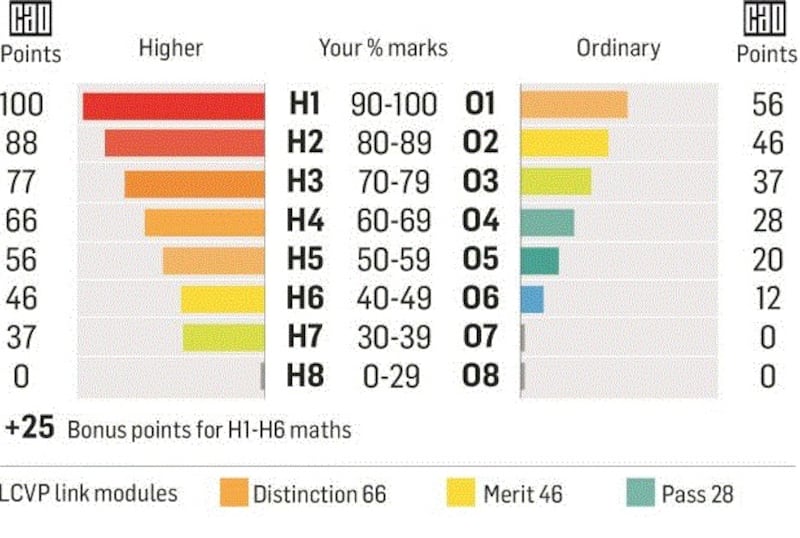- Click here to download a PDF of the 2018 Leaving Cert results: https://iti.ms/2OCrN7g
Sweeping changes to the Leaving Cert grading system were introduced last year.
The old familiar grading system - A1, B2, C3 - was replaced with grades from H1 to H8 (for higher-level subjects) and from O1 to O8 (for ordinary level subjects).
In all, there are a total of eight grades available at higher and ordinary level separated by margins of 10 per cent.
This compares to 14 under the old system, typically separated by margins of 5 per cent.
For example, a student at higher level who scores between 90 and 100 per cent will score a H1 under the new system, while a student who scores between 80 and 90 per cent will receive a H2.
One of the biggest changes is an old E grade is no longer an automatic fail: under the new system students get 37 points for grades between 30-39 per cent (a H7 under the new system).

These changes were aimed at taking some of the heat out of the “points race” and easing some of the pressure on students. Under the old system, the majority of grades were separated by just 5 per cent, equating to an additional five CAO points.
This caused heartbreak for many students who failed to qualify for their chosen college course because they missed out by such a narrow margin.
Some may question whether the new system is simply a “dumbing down” of the old one.
However, the State Examinations Commission insisted there had been no change in the exam standards of the Leaving Cert. Rather the change relates to how candidates' results are reported to them through the new grading system.
Critics also say the system could end up rewarding some students with relatively poor performances ahead of those who fared better.
For example, a student who gets 59 per cent is awarded the same points as one who gets 50 per cent under the new system.
In any case, the new system has the support of the majority of teacher, parent and student groups.












